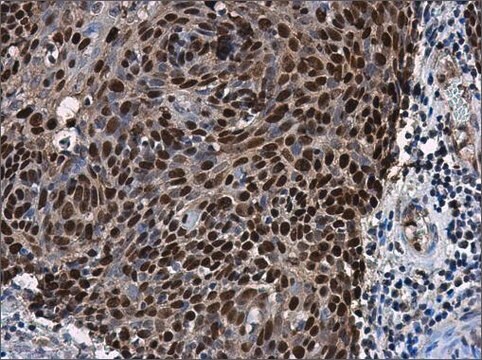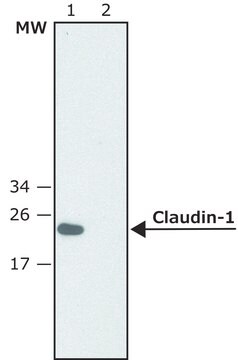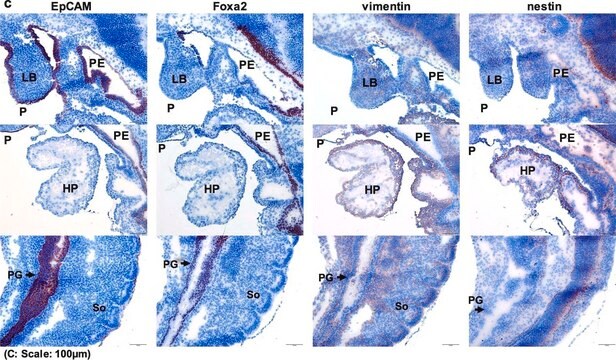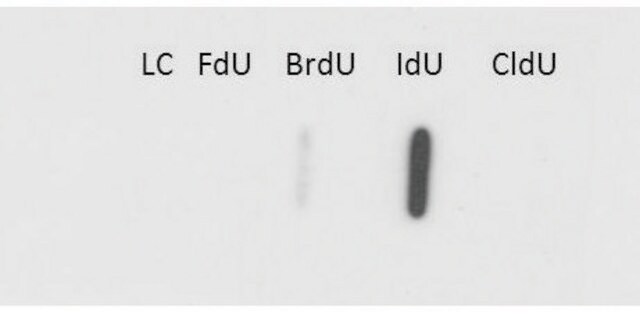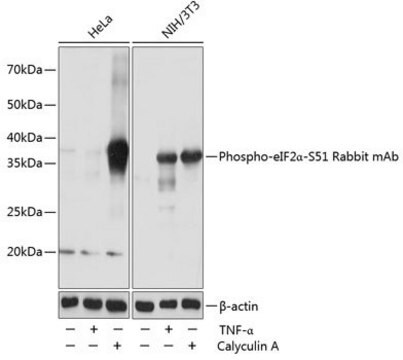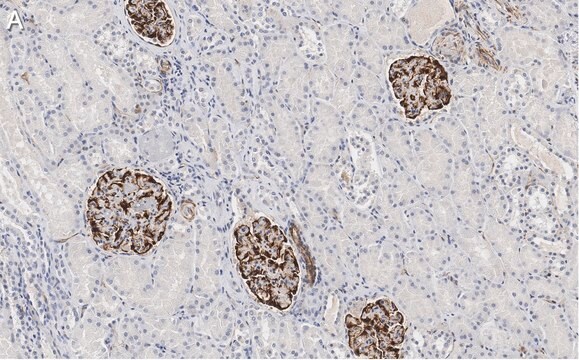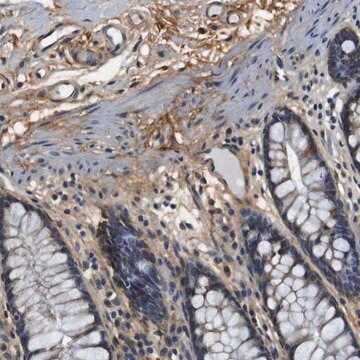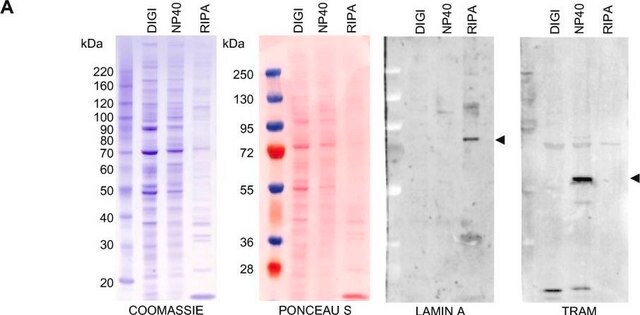추천 제품
생물학적 소스
rabbit
결합
unconjugated
항체 형태
affinity isolated antibody
항체 생산 유형
primary antibodies
클론
polyclonal
양식
buffered aqueous solution
분자량
antigen ~52 kDa
종 반응성
human
향상된 검증
recombinant expression
Learn more about Antibody Enhanced Validation
농도
~1.5 mg/mL
기술
western blot: 1.5-3.0 μg/mL using cell lysates of HEK-293T over expressing human GPR39
UniProt 수납 번호
배송 상태
dry ice
저장 온도
−20°C
타겟 번역 후 변형
unmodified
유전자 정보
human ... GPR39(2863)
일반 설명
GPR39 (G protein-coupled receptor 39) is an orphan member of the ghrelin receptor family expressed in brain and other peripheral tissues.
The full-length biologically active form of GPR39, called GPR39-1a, is found exclusively in peripheral tissues. A truncated spliced variant of GPR39 is expressed in various regions of the brain. GPR39 mRNA is highly expressed in endocrine and metabolic organs such as the pancreas, liver, the gastrointestinal tract and white adipose tissue. GPR39 expression specifically follows the endocrine pancreatic differentiation and is selectively expressed in β-cells of the pancreatic islets.
애플리케이션
Anti-GPR39 (C-terminal region) antibody produced in rabbit has been used in immunohistochemistry.
Anti-GPR39 (C-terminal region) antibody produced in rabbit is suitable for western blot at a concentration of 1.5-3.0μg/mL using cell lysates of HEK-293T over expressing human GPR39.
생화학적/생리학적 작용
G-protein coupled receptor 39 (GPR39) has been shown to be important regulators of food intake, energy metabolism and glucose homeostasis. GPR39 signals mainly through the Gαq and Gα12/13 leading to inositol phosphate accumulation and activation of downstream pathways such as the nuclear factor of activated T cells (NFAT) transcriptional pathway. GPR39 has been suggested to mediate glutamate metabotropic signaling triggered by synaptically released Zn2+ in the hippocampus. Knockout of GPR39 in mice is found to be associated with impaired insulin secretion, glucose tolerance and altered pancreatic β-cell gene expression and function, suggesting that this receptor could be a novel potential target for the treatment of diabetes.
GPR39 (G protein-coupled receptor 39) exerts ligand-independent signaling activity. It is mainly involved in the regulation of growth hormone secretion. It facilitates the functional activities of the growth hormone-releasing peptides (GHRPs) and non-peptide ligands such as L-692,429 and MK-0677. It has been studied that zinc ion triggers GPR39 activity during food intake and energy metabolism. Study also shows that GPR39 may control the neuronal activity not only by altering transmitter expression and release but also through altering neuronal plasticity.
물리적 형태
Solution in 0.01 M phosphate buffered saline, pH 7.4, containing 15 mM sodium azide.
면책조항
Unless otherwise stated in our catalog or other company documentation accompanying the product(s), our products are intended for research use only and are not to be used for any other purpose, which includes but is not limited to, unauthorized commercial uses, in vitro diagnostic uses, ex vivo or in vivo therapeutic uses or any type of consumption or application to humans or animals.
적합한 제품을 찾을 수 없으신가요?
당사의 제품 선택기 도구.을(를) 시도해 보세요.
Storage Class Code
10 - Combustible liquids
Flash Point (°F)
Not applicable
Flash Point (°C)
Not applicable
가장 최신 버전 중 하나를 선택하세요:
Synaptically released zinc triggers metabotropic signaling via a zinc-sensing receptor in the hippocampus
Besser L, et al.
The Journal of Neuroscience, 29(9), 2890-2901 (2009)
GPR39 splice variants versus antisense gene LYPD1: expression and regulation in gastrointestinal tract, endocrine pancreas, liver, and white adipose tissue
Egerod K, et al.
Molecular Endocrinology, 21(7), 1685-1698 (2007)
G protein-coupled receptor 39 deficiency is associated with pancreatic islet dysfunction
Holst B, et al.
Endocrinology, 150(6), 2577-2585 (2009)
Novel Zn2+ modulated GPR39 receptor agonists do not drive acute insulin secretion in rodents
Fjellstrom O, et al.
PLoS ONE, 10(12), e0145849-e0145849 (2015)
GPR39: a Zn 2+-activated G protein-coupled receptor that regulates pancreatic, gastrointestinal and neuronal functions
Popovics P and Stewart AJ
Cellular and Molecular Life Sciences, 68(1), 85-95 (2011)
자사의 과학자팀은 생명 과학, 재료 과학, 화학 합성, 크로마토그래피, 분석 및 기타 많은 영역을 포함한 모든 과학 분야에 경험이 있습니다..
고객지원팀으로 연락바랍니다.
